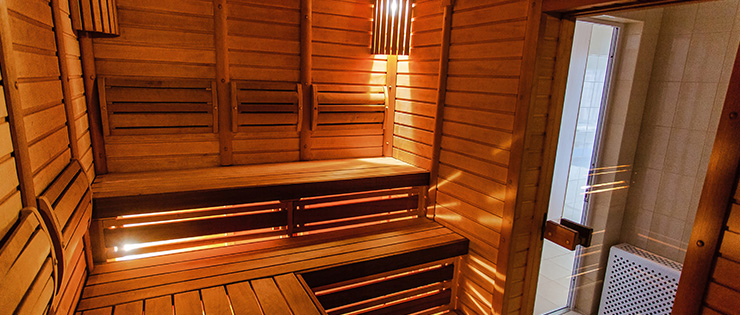
I’m a big fan of a good sauna sweat session. I went through a phase a few years ago where I would hit the sauna most days after work. It helped me unwind after a long day. Sometimes I would use the heat to stretch out sore and tight muscles, other times it was just chance to sit in silence and relax.
Traditional saunas have been around for centuries and work by heating the air around you. Generally, the temperature sits somewhere around 70-90 degrees Celcius. Standard practice would be to sit for 10-20 minutes before a much-needed break (often cooling off in a shower or pool) before repeating the cycle a few times. Research over the years has suggested that regular saunas can have positive effects on cardiovascular health and respiratory illness.
More recently Infrared Saunas have begun to gain popularity in the modern wellness world.
If you believe everything you read then a few sessions in an infrared sauna will provide the following benefits: detoxification, reduced pain from sore muscles and joints, improved sleep, help with weight loss along with a few proposed cardiovascular and respiratory benefits.
How do infrared saunas work?
Designed to look like a traditional sauna but instead of creating heat by pouring water over hot rocks they have infrared heating panels inbuilt into the walls which use light to warm the body directly. These infrared waves penetrate deep into the body’s tissues which activate the sweat glands and induces perspiration. Given the skin is our largest organ sweating can assist with eliminating some of the body’s toxins (please note I’ve said ‘some of the toxins’ as I by no means believe that a sauna can completely detoxify your body). The deep sweat can expel dirt, chemicals and dead skin cells while also increasing circulation through vasodilation of the peripheral blood vessels.
The temperature in an infrared sauna sits around 40-60 degrees and a typical session would last 30-45 minutes. The lower temperatures make it a popular choice among people who are unable to tolerate the intense heat of a conventional sauna. Despite this, it is still possible to suffer the effects of overheating and dehydration so it’s always advised to stay hydrated and ensure you limit the time especially if you are haven’t spent time in an infrared sauna before. Infrared saunas are not suitable for some medical conditions so if you are unsure make sure you check with your treating practitioner.
Unfortunately, there is a lack of significant strong evidence to support many of the suggested benefits of infrared sauna’s but on the flip side, there are also no reported negative impacts.
In my opinion, when it comes to saunas (both infrared and traditional) it’s all about what makes you feel good. If you love the feeling of a deep sweat, and you believe its cleansing you, aiding your muscle recovery and helping you sleep better then that’s fantastic and definitely keep sauna’ing. I personally don’t think it’s a stand-alone answer to any health or wellbeing issues.